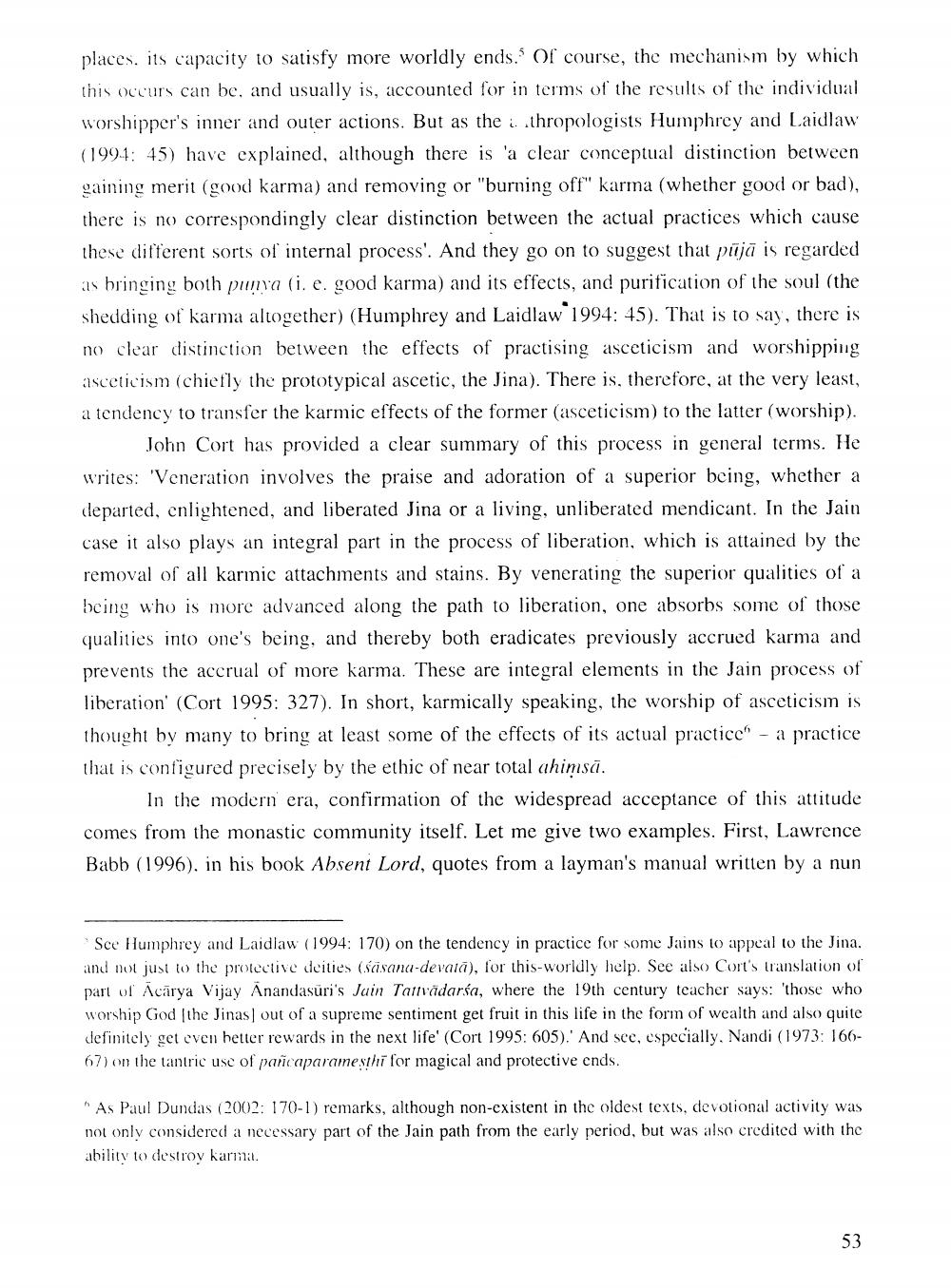________________
places. its capacity to satisfy more worldly ends. Of course, the mechanism by which this occurs can be, and usually is, accounted for in terms of the results of the individual worshipper's inner and outer actions. But as the i. thropologists Humphrey and Laidlaw (1994: 45) have explained, although there is a clear conceptual distinction between gaining merit (good karma) and removing or "burning off" karma (whether good or bad), there is no correspondingly clear distinction between the actual practices which cause these different sorts of internal process'. And they go on to suggest that püjā is regarded as bringing both punya (i e. good karma) and its effects, and purification of the soul (the shedding of karma altogether) (Humphrey and Laidlaw 1994: 45). That is to say, there is no clear distinction between the effects of practising asceticism and worshipping asceticism (chiefly the prototypical ascetic, the Jina). There is therefore, at the very least, a tendency to transfer the karmic effects of the former (asceticism) to the latter (worship).
John Cort has provided a clear summary of this process in general terms. He writes: 'Veneration involves the praise and adoration of a superior being, whether a departed, enlightened, and liberated Jina or a living, unliberated mendicant. In the Jain case it also plays an integral part in the process of liberation, which is attained by the removal of all karmic attachments and stains. By venerating the superior qualities of a being who is more advanced along the path to liberation, one absorbs some of those qualities into one's being, and thereby both eradicates previously accrued karma and prevents the accrual of more karma. These are integral elements in the Jain process of liberation' (Cort 1995: 327). In short, karmically speaking, the worship of asceticism is thought by many to bring at least some of the effects of its actual practice" - a practice that is configured precisely by the ethic of near total ahimsā.
In the modern era, confirmation of the widespread acceptance of this attitude comes from the monastic community itself. Let me give two examples. First, Lawrence Babb (1996), in his book Absent Lord, quotes from a layman's manual written by a nun
See Humphrey and Laidlaw (1994: 170) on the tendency in practice for some Jains to appeal to the Jina. and not just to the protective deities (sasana-devatā), for this worldly help. See also Cort's translation of part of Acārya Vijay Anandasuri's Juin Tanträdarśa, where the 19th century teacher says: 'those who worship God (the Jinas, out of a supreme sentiment get fruit in this life in the form of wealth and also quite definitely get even hetter rewards in the next life' (Cort 1995: 605). And sce, especially. Nandi (1973: 16667) on the tantric use of paricaparamesthi for magical and protective ends.
"As Paul Dundas (2002: 170-1) remarks, although non-existent in the oldest texts, devotional activity was not only considered a necessary part of the Jain path from the early period, but was also credited with the ability to destroy karma.




